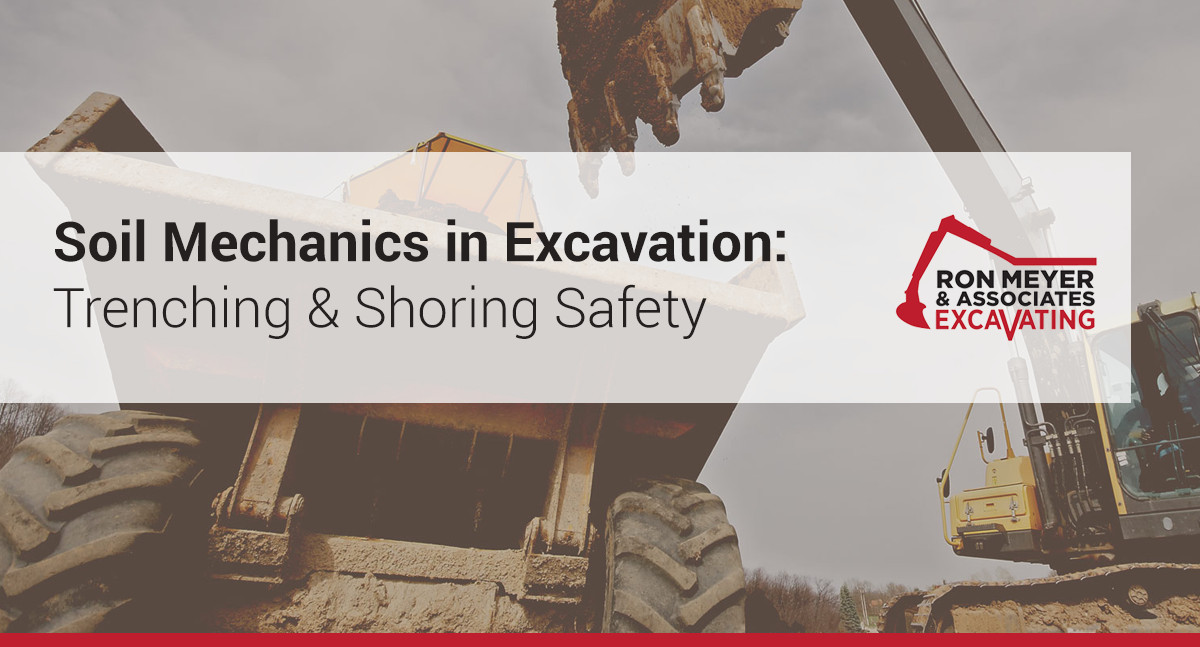
Introduction to Soil Mechanics
Soil mechanics is a branch of soil physics and engineering mechanics that describes the behavior of soils. It differs from fluid mechanics and solid mechanics in the sense that soils consist of a heterogeneous mixture of fluids (usually air and water) and particles (usually clay, silt, sand, and gravel) but soil may also contain organic solids and other matter.
Soil mechanics is used to analyze the deformations of and flow of fluids within natural and man-made structures that are supported on or made of soil, or structures that are buried in soils.
Example applications are building and bridge foundations, retaining walls, dams, and buried pipeline systems.
A number of stresses and deformations can occur in an open cut or trench. For example, increases or decreases in moisture content can adversely affect the stability of a trench or excavation. The following are some of the more frequently identified causes of trench failure.
Tension Cracks
Tension Cracks. Tension cracks usually form at a horizontal distance of 0.5 to 0.75 times the depth of the trench, measured from the top of the vertical face of the trench.
Sliding
Sliding or sluffing may occur as a result of tension cracks.
Toppling
Toppling. In addition to sliding, tension cracks can cause toppling. Toppling occurs when the trench’s vertical face shears along the tension crack line and topples into the excavation.
Subsidence and Bulging
Subsidence and Bulging. An unsupported excavation can create an unbalanced stress in the soil, which, in turn, causes subsidence at the surface and bulging of the vertical face of the trench. If uncorrected, this condition can cause face failure and entrapment of workers in the trench.
Heaving or Squeezing
Heaving or Squeezing. Bottom heaving or squeezing is caused by the downward pressure created by the weight of adjoining soil. This pressure causes a bulge in the bottom of the cut, as illustrated in the drawing above. Heaving and squeezing can occur even when shoring or shielding has been properly installed.
Boiling
Boiling is evidenced by an upward water flow into the bottom of the cut. A high water table is one of the causes of boiling. Boiling produces a “quick” condition in the bottom of the cut, and can occur even when shoring or trench boxes are used.
Unit Weight of Soils
Unit Weight of Soils refers to the weight of one unit of a particular soil. The weight of soil varies with type and moisture content. One cubic foot of soil can weigh from 110 pounds to 140 pounds or more, and one cubic meter (35.3 cubic feet) of soil can weigh more than 3,000 pounds.
This information is provided by OSHA’s Technical Manual. For more information about soil mechanics, see: Excavations: Hazard Recognition in Trenching and Shoring, Overview: Soil Mechanics.
At Ron Meyer & Associate Excavating, Inc, we’ve been providing underground and commercial construction to private and commercial businesses for 39 years. As the general contractor or subcontractor, our experienced foremen, equipment operators, pipe layers, truck drivers and well-maintained equipment fleet make us an undeniable choice for your excavating services. Let’s talk about your project!
Resources:
- https://www.osha.gov/dts/osta/otm/otm_v/otm_v_2.html#3
- https://en.wikipedia.org/wiki/Soil_mechanics
- www.fhmic.com/wp-content/uploads/2011/06/Excavation-and-Trenching.ppt
Related Articles:

As 45 years of experience as an underground/site contactor and a third generation contractor, Ron takes time to go through each individual project with the supervisor and is responsible for all scheduling and equipment logistics. He’s also involved in all troubleshooting for projects.